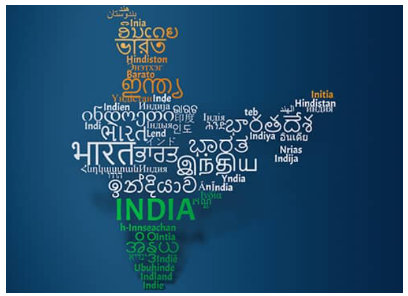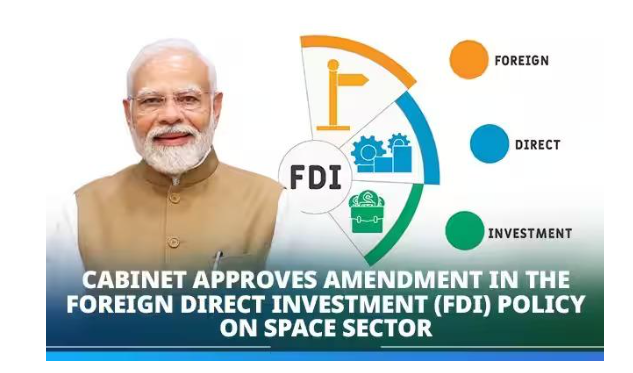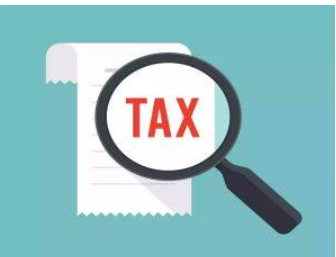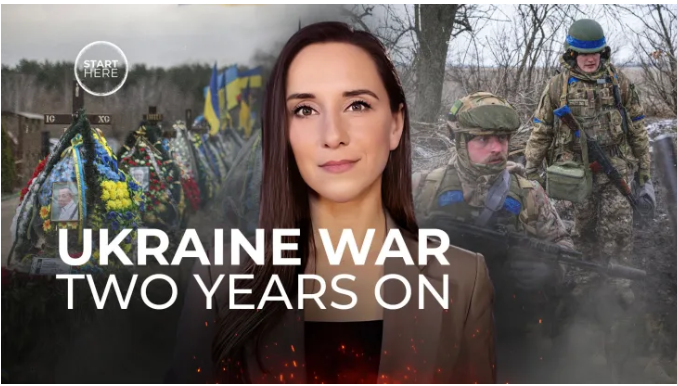Friday, 1st March 2024
Environmental Impact of Used Heavy Duty Vehicles
In News: UNEP and Climate and Clean Air Coalition released a report on used heavy-duty vehicles before UNEA-6, offering a global overview of their flow, scale, and regulation.
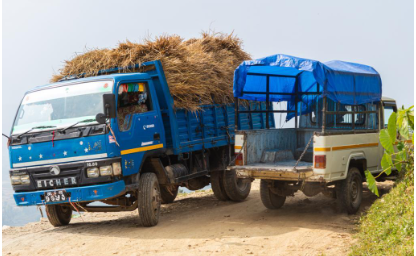
Key Report Highlights
- Escalation of Pollution
- Significant rise in pollution attributed to Heavy-Duty Vehicles (HDVs) since 2000.
- Over 30% surge in carbon dioxide emissions from HDVs.
- HDVs weighing above 3.5 tonnes major contributors to global emissions.
- Over 40% of on-road nitrogen oxides (NOx) emissions and more than 60% of on-road particulate matter (PM 2.5) attributed to HDVs.
- Growth Projection
- Anticipation of a substantial increase in the number of HDVs due to economic activities.
- Previous trends indicate a doubling of global truck and bus sales between 2000-2015.
- Global Trade
- Analysis of global used HDVs reveals their flow and scale.
- Japan, the European Union, and the Republic of Korea constitute nearly 60% of the global export market share.
- In 2015, 6.3 million new and used HDVs sold worldwide, with 50% being used vehicles.
- Regulation and Enforcement
- Importing countries lack regulation and enforcement on the quality of used HDVs.
- Weak or non-existent regulations in many importing countries contribute to environmental and health impacts.
Key Recommendations
- Ensure Cleaner and Safer Vehicles
- Shared responsibility of importing and exporting countries to ensure cleaner and safer used vehicles.
- Emphasizes the need for regional cooperation and the enforcement of minimum standards.
- Emission Standards and Age Limits
- Advocates for emission standards and age limits.
- Calls for public awareness and research to promote environmental and road safety benefits.
- Better Regulations on Used HDVs
- Recommends improved regulations on used HDVs to encourage the adoption of advanced technologies in developing countries.
- International Collaborations for Super Pollutants
- Urges international collaboration to phase out short-lived climate pollutants like Methane and Black Carbon.
- Addresses the higher global warming potential of "super pollutants" compared to carbon dioxide.
|
UPSC Previous Year Questions Prelims (2016) Q. In the cities of our country, which among the following atmospheric gases are normally considered in calculating the value of Air Quality Index?
Select the correct answer using the code given below: (a) 1, 2 and 3 only Ans: (b) Mains (2021) Q. Describe the key points of the revised Global Air Quality Guidelines (AQGs) recently released by the World Health Organisation (WHO). How are these different from its last update in 2005? What changes in India’s National Clean Air Programme are required to achieve revised standards? |
Source: DTE
Law Commission Completes Report on Simultaneous Elections
In News: According to multiple media sources, the 22nd Law Commission is preparing to propose the inclusion of a new chapter on simultaneous elections in the Constitution.
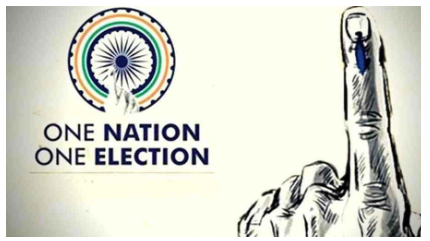
Law Commission of India: Examining Simultaneous Elections
Overview of Law Commission
- The Law Commission of India operates as a non-statutory body under the Union government, ensuring just and fair laws' proper implementation.
- Established as an ad hoc advisory body to the Ministry of Law and Justice, it operates under Article 39A, focusing on justice accessibility.
Simultaneous Elections in India: A Conceptual Look
- The "One Nation, One Election" concept proposes synchronizing all state and Lok Sabha elections.
- This entails restructuring the election cycle to align state and central elections, allowing voters to participate in both on the same day.
Historical Perspective on Simultaneous Elections
- Initial elections in 1951 witnessed simultaneous Lok Sabha and Legislative Assembly elections.
- From 1967, the tradition declined, marked by the dissolution of the Lok Sabha in 1971 and disturbances during the National Emergency in 1975.
Current Electoral Scenario
- Recent decades have seen only four State Assemblies aligning with Lok Sabha elections.
- The prevailing practice involves multiple rounds of Assembly general elections annually.
Law Commission's Proposed Recommendations
- Introduction of a new chapter (Part XVA) in the Constitution for simultaneous polls.
- Recommendations set for implementation in 2029 elections, proposing a phased synchronization of assembly elections over five years.
- Addressing hung assembly scenarios by suggesting attempts to form an all-party unity government.
- Proposing a Constitutional amendment for the sustainability of simultaneous elections.
- Advocating a third Constitutional amendment for a common voter list, eliminating disparities between different election levels.
Key Takeaways from the Law Commission's Report
- The report suggests a comprehensive framework for simultaneous elections, considering practicalities and political dynamics.
- Emphasis on phased implementation and common voter lists aims at streamlining the electoral process.
- Recommendations poised for 2029 align with the commission's forward-looking approach.
Law Panel's Progress on Simultaneous Polls
- The 22nd Law Commission prepares to incorporate a new chapter on simultaneous polls in the Constitution.
- Detailed presentations made before a high-level committee highlight potential recommendations.
- Recommendations poised for implementation in 2029 elections, focusing on synchronization and practical governance solutions.
Source: IE
Bitcoin Halving
In News: Anticipated in April 2024, the forthcoming Bitcoin (BTC) halving is on the horizon, carrying potential significant consequences for the cryptocurrency's market valuation.

Bitcoin Halving Explained
- Definition
- A Bitcoin halving is a periodic event occurring approximately every four years, reducing the reward for miners by 50%, ultimately limiting the total supply of bitcoins to 21 million.
- Scheduled Occurrence
- Bitcoin halvings are pre-scheduled to happen every 210,000 blocks, playing a crucial role until the maximum supply of 21 million bitcoins is achieved.
- Impact on Traders
- These events are significant for traders as they decrease the creation rate of new bitcoins, creating scarcity and potentially driving up prices due to sustained demand.
Understanding Bitcoin
- Introduction
- Bitcoin, introduced in 2009, is a digital currency not governed by any central authority, enabling instant payments between parties.
- Historical Origin
- Its origin, attributed to the pseudonymous Satoshi Nakamoto after the 2008 financial crisis, aimed to provide an alternative to traditional fiat currencies.
- Original Purpose
- Initially conceived as an alternative medium of exchange, Bitcoin transactions are recorded on a public, open ledger known as the blockchain.
- Blockchain Technology
- Blockchain is a decentralized, immutable ledger facilitating transparent recording of transactions, ensuring secure and anonymous documentation of all Bitcoin transactions.
- Unit of Measurement
- Bitcoin transactions can be denominated in sub-units, with the smallest fraction being a Satoshi.
|
UPSC Previous Year Questions Prelims (2020) Q. With reference to “Blockchain Technology”, consider the following statements:
Which of the statements given above is/are correct? (a) 1 only Ans: (d) |
Source: TH
Government Securities
In News: The government has concluded its borrowing of Government Securities (G-Secs) for the ongoing fiscal year 2023-24. Anticipating a dividend from the Reserve Bank of India (RBI) in the Financial Year 2024-25 (FY 25), akin to FY 24.
Understanding Government Securities (G-Sec)
Overview
- Government Securities (G-Sec) are tradable instruments issued by either the Central Government or State Governments, serving as a means for them to borrow money from the public and address fiscal deficits.
Debt Instruments
- G-Secs are a type of debt instrument, signifying a contractual obligation by the government to repay the holder a fixed amount, known as the principal or face value, on a specified maturity date. These instruments acknowledge the government's debt commitment.
Risk and Types
G-Secs, considered risk-free gilt-edged instruments, come in two main types:
- Treasury Bills (T-bills): Short-term, zero-coupon securities issued at a discount and redeemed at face value upon maturity.
- Dated G-Secs: Long-term securities with fixed or floating coupon rates, paid semi-annually.
Additional Instruments
- Cash Management Bills (CMBs): Introduced in 2010, these short-term instruments address temporary mismatches in the government's cash flow.
- State Development Loans (SDLs): Issued by State Governments, these are dated securities raised through auctions.
Issue Mechanism
- Open Market Operations (OMOs): The RBI conducts OMOs, involving the sale or purchase of G-Secs to regulate money supply. Selling removes liquidity, while buying infuses liquidity, aiding banks in maintaining lending activities.
- Operations Details: OMOs are executed through commercial banks, not directly involving the public. The RBI combines OMOs with other monetary tools for effective control over money quantity and pricing in the system.
|
UPSC Previous Year Questions Prelims (2013) Q. In the context of Indian economy, ‘Open Market Operations’ refers to (a) borrowing by scheduled banks from the RBI Ans: (c) Prelims (2020) Q.2 In the context of the Indian economy, non-financial debt includes which of the following?
Select the correct answer using the code given below: (a) 1 only Ans: (d)
Prelims (2018) Q.3 Consider the following statements:
Which of the statements given above is/are correct? (a) 1 and 2 only Ans: (c) |
Source: BL
SWAYAM Plus Platform
In News: The Union Minister of Education and Skill Development & Entrepreneurship recently launched the SWAYAM Plus Platform in New Delhi.
SWAYAM Plus: Transforming Education for Employability
- Inception and Objective
- Launched in 2017 by the Ministry of Education.
- SWAYAM Plus aims to provide educational opportunities aligned with NEP 2020.
- Enhancements for Employability
- Offers industry-relevant courses to enhance employability.
- Features include multilingual content, AI guidance, credit recognition, and pathways to employment.
- Strategic Collaborations
- Collaborates with companies like L&T, Microsoft, CISCO, and others.
- Develops courses to meet industry demands and standards.
- Key Focus Areas
- Creates an ecosystem supporting professional and career development.
- Implements a system recognizing high-quality certifications from top industry and academic partners.
- Broad Accessibility
- Targets a diverse learner base nationwide, with a special focus on tier 2 and 3 towns, and rural areas.
- Provides employment-focused courses in various disciplines with vernacular language resources.
Source: PIB
Ultra-High Net Worth Individuals (UHNWIs)
In News: India has seen a consistent rise in the number of Ultra-High Net Worth Individuals (UHNWIs), reaching 13,263 in 2023.
Ultra-High Net Worth Individuals (UHNWIs): A Wealth Projection
- Definition: UHNWIs are individuals with a net worth of USD 30 million and above.
- Indian Growth (2023): The UHNWI population in India witnessed a growth of 6.1% in 2023, setting a positive trend in wealth accumulation.
- Projected Growth (India, 2028): It is projected to experience a remarkable 50% rise by 2028, showcasing robust wealth expansion.
- Global Perspective (2028): Globally, the number of wealthy individuals is anticipated to increase by 28.1% to reach 8,02,891 by 2028.
Top Performers (UHNWI Growth)
- Turkey: Leads in UHNWI growth with an impressive 9.7% yearly expansion.
- Followed by: The United States, South Korea, and Switzerland also exhibit notable growth in UHNWI numbers.
Source: HT
Hungary Ratifies Sweden's NATO Membership
In News: Hungary's parliament has endorsed Sweden's application to become the 32nd member of the North Atlantic Treaty Organization (NATO).
NATO: Safeguarding Collective Security
- Foundation and Membership
- Established in 1949 by 12 founding nations.
- Majority representation from Europe and North America.
- Headquarters
- Located at Boulevard Leopold III in Brussels, Belgium.
- Alliances within NATO
- Euro-Atlantic Partnership Council (EAPC)
- Mediterranean Dialogue: Enhances relations and fosters security in the Mediterranean.
- Istanbul Cooperation Initiative (ICI): Involves non-NATO countries in the broader Middle East region to enhance regional security.
- NATO Plus": An informal security arrangement involving NATO and five non-treaty allies, including Australia, New Zealand, Japan, Israel, and South Korea. Aimed at strengthening global defense cooperation and addressing strategic competition with the Chinese Communist Party.
- Note:
- "NATO Plus" is not officially recognized or established within NATO.
Source: TH
National Commission for Backward Classes
In News: The National Commission for Backward Classes (NCBC) has strongly objected to the West Bengal government's proposal to add 83 castes to the central list of Other Backward Classes (OBCs).
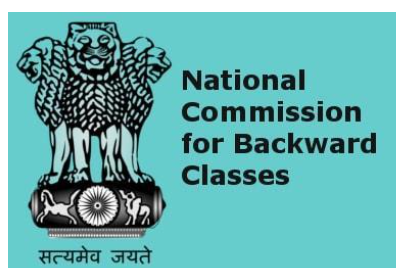
National Commission for Backward Classes (NCBC)
Establishment and Constitutional Status
- Formed under the National Commission for Backward Classes Act, 1993, by the Central Government in the Ministry of Social Justice and Empowerment.
- Attained constitutional status through the "The Constitution (One Hundred and Second Amendment) Act, 2018," adding Article 338B to the Constitution.
Composition
- Comprises a Chairperson, Vice-Chairperson, and three other Members with the rank and pay of the Secretary to the Government of India.
- Appointments made by the President through warrant under hand and seal.
Functions
- Investigate and monitor matters related to safeguards for socially and educationally backward classes.
- Inquire into specific complaints regarding the deprivation of rights and safeguards of such classes.
- Participate and advise on the socio-economic development of these classes, evaluating their progress under the Union and States.
- Present annual reports to the President on the working of safeguards.
- Make recommendations for effective implementation of safeguards and other measures for the protection, welfare, and socio-economic development of these classes.
- Undertake functions specified by the President related to the protection, welfare, and development of backward classes.
Powers
- Empowered with the authority of a civil court during complaint inquiries.
- Consulted by the Union and State Governments on major policy matters affecting backward classes.
- Holds the power to regulate its own procedures.
Reporting
- The President presents the Commission's reports to each House of Parliament.
- The reports include a memorandum explaining actions taken on recommendations and reasons for non-acceptance, if any.
Source: ET
Neolithic Period
In News: An ancient burial site, potentially dating back to the Neolithic period, was discovered near Chennai at Chettimedu Pathur, revealing the remains of a child alongside an accompanying pottery.
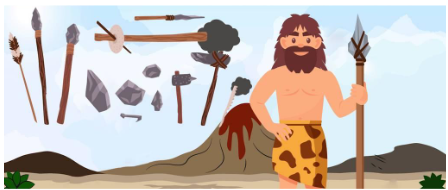
Neolithic Period Overview
- Definition
- Also known as the New Stone Age, it signifies the concluding phase of cultural and technological progress among prehistoric humans.
- Association with Agriculture
- Primarily linked to the advent of agriculture, marked by the introduction of cereal cultivation and animal domestication.
- Cultural Characteristics
- Signifies the shift to a settled human lifestyle, departing from the nomadic patterns of the Paleolithic Period.
- Chronological Placement
- Occurred during the Holocene Epoch, spanning approximately the last 11,700 years of Earth's history.
- Generally believed to have commenced around 10,000 BCE.
- Historical Sequence
- Succeeded the Paleolithic Period characterized by chipped-stone tools and preceded the Bronze Age, marked by early metal tools.
- Neolithic Revolution
- Initiated in the Fertile Crescent, a Middle Eastern region, marking the inception of agriculture as humans embraced farming.
- Distinctive Features
- Stone tools shaped through polishing or grinding, reliance on domesticated plants and animals.
- Establishment of permanent villages, emergence of crafts like pottery and weaving.
- Introduction of architectural structures built with mud and reed.
- Cultural Practices
- Origin of alcohol production during this period.
- Appearance of interior and exterior architectural decoration.
- Burial practices with status objects denoting beliefs in the afterlife and emerging social classes.
- Transition to Bronze Age
- Copper metallurgy emerges towards the end, signaling the transition to the Bronze Age.
- Bronze replaces stone tools, leading to the obsolescence of Neolithic technologies.
- Neolithic Sites in India
- Important sites include Burzahom in Kashmir, Chiron in Bihar and Uttar in Andhra Pradesh, and Edakkal caves in Kerala.
Source: IE
Roen olmi
In News: In Goa, two researchers have reported the synthesis of gold nanoparticles from a wild mushroom species commonly consumed as a delicacy in the coastal region.
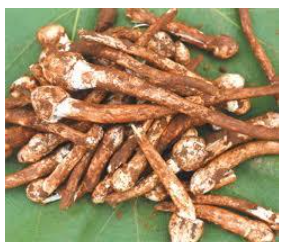
About Roen olmi
- Termitomyces Species: Roen olmi belongs to the Termitomyces species, specifically found in the Western Ghats.
- Local Name: Known as ‘roen olmi’ in Goa, it is a well-known edible wild mushroom, especially popular among the local population during the monsoons.
- Habitat: These mushrooms are exclusive to termite hills, growing in association with termites. The Western Ghats, with its dense forest cover and high humidity, provides an ideal habitat for their growth.
- Ecological Significance: Roen olmi serves a crucial role as a biodegrading fungus in forest and grassland ecosystems. It contributes to the conversion of 50% of dead plant material on the ground into nutrient-rich soil.
- Edible and Nutrient Value: All Termitomyces species, including Roen olmi, are edible. They are valued for their unique texture, flavor, and nutrient content. They offer beneficial medicinal properties.
- Antioxidant and Antimicrobial Properties: Termitomyces species, including Roen olmi, have been recognized for their ethno-medicinal importance in various indigenous communities in Asia and Africa. They possess beneficial antioxidant and antimicrobial properties.
Source: IE
Revamping Early Childhood Education
In News: The article underscores the need for increased focus on early childhood care and education, highlighting the imperative for greater investments in this crucial domain.
Current Status of Early Childhood Care and Education (ECCE)
- Free and Compulsory Education
- Constitutional provisions under Article 45 aim at providing free and compulsory education for children up to fourteen years.
- Improvements in Gross Enrolment Ratio (GER)
- Incremental progress in Gross Enrolment Ratio at the primary level, exceeding 100%.
- Dilemmas in Learning Outcomes
- Growing emphasis on measuring learning outcomes with data revealing challenges in primary-level education.
- Enhanced Focus for Children-Under-Six
- Government initiatives like NIPUN Bharat and Poshan Bhi Padhai Bhi targeting children under six for foundational literacy and numeracy.
- Budgetary Allocations
- Positive signals in the interim Budget 2024 with promises for upgrading Saksham Anganwadis and expanding Ayushman Bharat services.
- Disparities in Fund Allocations Compared to Higher Education
- Allocated funds for ECCE compared to higher education and health sectors, indicating relative priorities.
Challenges to ECCE in India
- Affordability
- High costs of early childhood education in private schools, hindering investments in ECCE.
- Accessibility
- Limited accessibility to traditional early learning formats, especially in rural areas.
- Availability
- Challenges persist despite increased government investment, highlighting regulatory gaps and fragmentation.
- Low Parental Engagement
- Parental engagement hindered by various factors, impacting a child's early learning journey.
- Lacunae in Right to Education Act (RTE) 2009
- The RTE Act lacks provisions for foundational literacy and numeracy for children up to six years.
- Low Public Spending
- India's spending on education below the global average, posing a challenge to ECCE initiatives.
Suggestions for Reforming ECCE
- Utilising Digital Penetration
- Leveraging digital platforms to provide engaging and age-appropriate content for early learners.
- Filling Infrastructural Gaps
- Initiating comprehensive teacher training programs, improving infrastructure, and creating specialized learning centers.
- Recognising Diversity in Approaches
- Acknowledging diverse approaches, including parents providing care at home and leveraging various learning methods.
- Need for Investments
- Increased allocation and expenditure for ECCE, considering its potential impact on GDP.
- Need for Research in ECCE
- Systematic research to understand the macroeconomic and social implications of early childhood development.
- Effectively Implementing the Mandate of NEP, 2020
- Focusing on nationwide access to high-quality ECCE, as emphasized in the National Education Policy (NEP) 2020.
Conclusion
Investing in ECCE is vital for India's future, with recent initiatives and budget allocations reflecting positive momentum. Recognizing ECCE's importance and conducting rigorous research will be instrumental in formulating effective policies. As India aims for development milestones, prioritizing ECCE will ensure a prosperous future for its children and the nation.
|
UPSC Previous Year Questions Prelims (2018) Q. Consider the following statements
Which of the statements given above is/are correct? (a) 1 and 2 Ans: (b) Prelims (2012) Q. Which of the following provisions of the Constitution does India have a bearing on Education?
Select the correct answer using the codes given below: (a) 1 and 2 only Ans: (d) Mains (2020) Q. National Education Policy 2020 is in conformity with the Sustainable Development Goal-4 (2030). It intends to restructure and reorient education system in India. Critically examine the statement. |
Source: TH
Share the article
Edukemy’s Current Affairs Quiz is published with multiple choice questions for UPSC exams
MCQ
Get Latest Updates on Offers, Event dates, and free Mentorship sessions.

Get in touch with our Expert Academic Counsellors 👋
Frequently Asked Questions
UPSC Daily Current Affairs focuses on learning current events on a daily basis. An aspirant needs to study regular and updated information about current events, news, and relevant topics that are important for UPSC aspirants. It covers national and international affairs, government policies, socio-economic issues, science and technology advancements, and more.
UPSC Daily Current Affairs provides aspirants with a concise and comprehensive overview of the latest happenings and developments across various fields. It helps aspirants stay updated with current affairs and provides them with valuable insights and analysis, which are essential for answering questions in the UPSC examinations. It enhances their knowledge, analytical skills, and ability to connect current affairs with the UPSC syllabus.
UPSC Daily Current Affairs covers a wide range of topics, including politics, economics, science and technology, environment, social issues, governance, international relations, and more. It offers news summaries, in-depth analyses, editorials, opinion pieces, and relevant study materials. It also provides practice questions and quizzes to help aspirants test their understanding of current affairs.
Edukemy's UPSC Daily Current Affairs can be accessed through:
- UPSC Daily Current Affairs can be accessed through Current Affairs tab at the top of the Main Page of Edukemy.
- Edukemy Mobile app: The Daily Current Affairs can also be access through Edukemy Mobile App.
- Social media: Follow Edukemy’s official social media accounts or pages that provide UPSC Daily Current Affairs updates, including Facebook, Twitter, or Telegram channels.

